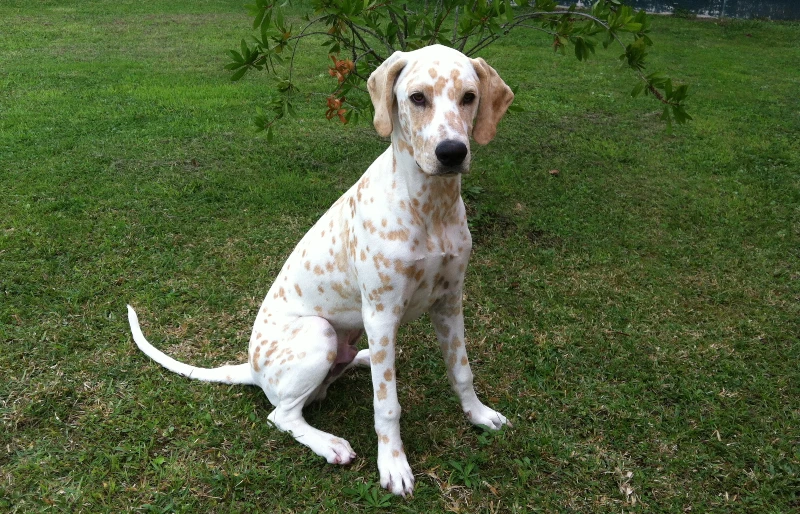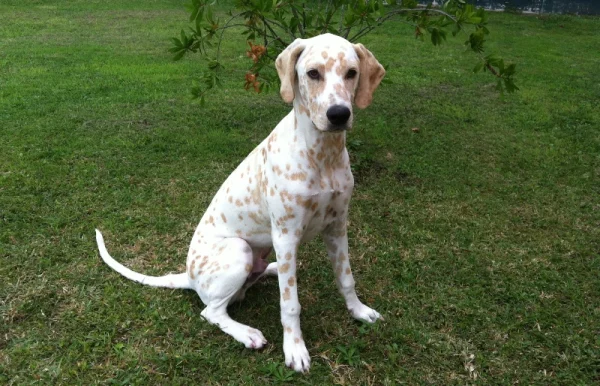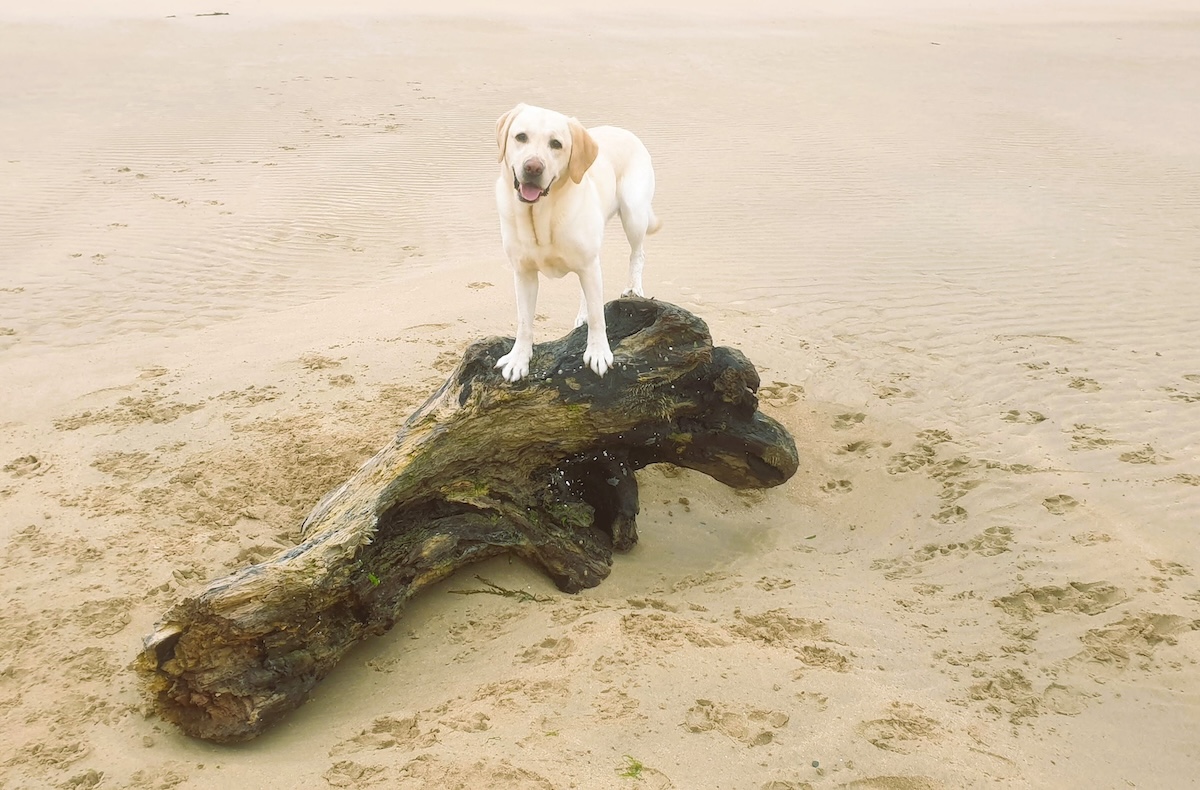Click to Skip Ahead
The Dalmatian is an iconic breed known for their dazzling coats of black and white spots. Dalmatians are primarily associated with their black and white coats, but did you know a very rare color of Dalmatian with light yellow spots exists? The lemon Dalmatian is a beautiful and seldom-seen dog, and you can discover what causes this extraordinary coloration and more about them below!
Breed Overview
Height:
19–24 inches
Weight:
45–70 pounds
Lifespan:
11–13 years
Colors:
White, yellow
Suitable for:
Active families, those wanting an unusual-looking dog, those wanting an affectionate but diligent watchdog
Temperament:
Loyal, loving, intelligent, diligent, aloof with strangers
The lemon Dalmatian is a rare color variant of the normal black and white Dalmatian coloring. The same signature spotting is present, but the yellow is light and golden. This remarkable color is due to a genetic mutation where the “E” locus is expressed rather than the “B” or “b” (black and brown, respectively). Unfortunately, lemon coloring is not part of the breed standard; only black and liver-colored spots are accepted, according to the American Kennel Club (AKC) and other organizations.
Lemon Dalmatian Breed Characteristics

The Earliest Records of Lemon Dalmatian in History

Dalmatians have a long history of working alongside humans in different ways. The first mention of the Dalmatian was in the 16th or 18th century when church documents and frescos of the breed were created in Croatia (their country of origin). Some of the records from Bishop Petar Bakic from 1719 claim the dog originated in Dalmatia, hence their name!
The first mention of colors was not formally introduced until 1882, when Vero Shaw wrote the unofficial breed standard. Lemon-colored spots were, and still are, cause for disqualification from all awarding bodies. However, because the mutation that causes the lemon coat is a natural one, lemon Dalmatians have likely been around since the first black and white ones!
How Lemon Dalmatian Gained Popularity
Dalmatians were originally utilized by people in the 16th century as carriage dogs, walking or trotting alongside them as protection. Before automobiles were invented, Dalmatians cleared the road for firemen’s horses. They were not spooked by the horses or bothered by the smoke when they reached the fire. The Dalmatian’s natural swiftness and affinity for horses afforded it a place among people that lasts to this day.
Because of that, the Dalmatians quickly grew in popularity. In the 20th century, the famous Disney film “101 Dalmatians” made the dogs even more appealing to potential pet parents. The lemon Dalmatian isn’t as popular as the standard variety, purely because it’s so rare.
Formal Recognition of Lemon Dalmatian
The lemon Dalmatian is unfortunately not recognized by any of the major kennel clubs worldwide. The Federation Cynologique Internationale (FCI), Kennel Club (KC), and the AKC disqualify any colors of spots other than black or liver on Dalmatians, including lemon.
However, the AKC formally recognized the black and liver colors in 1888, as did the FCI in 1955. The UK KC doesn’t have a date of recognition, but the first Dalmatian shown to standard was in 1862 in England.

Top 3 Unique Facts About Lemon Dalmatians
1. They’re Rare, but Not the Rarest!
Lemon Dalmatians are one of the rarer coat colors you can find, but they’re by no means the rarest! Dalmatians can have shades of orange and red spots, but the rarest are tri-color or brindle Dalmatians! Brindle is a striped mix of browns, reds, and blacks, which are still spotted against the white background. Tri-color Dalmatians are rarer still and have a lovely mixture of black, liver, and tan spots.
2. No Two Lemon Dalmatians Are the Same
Like other Dalmatians, lemon Dalmatians have a coat of spots that is unique to them. No two Dals are the same, and each dog’s coat pattern is as unique as a person’s fingerprint!
3. They’re the Only Breed Specifically Bred for Coaching
Dalmatians (including the lemon variety) are the only dog breed in the world that was specifically bred for “coaching” or running alongside a coach drawn by horses. Dalmatians and their spotted ancestors have been running after chariots and horse-drawn carts for thousands of years, and this instinct was kept in the breed by selecting the best coach dogs of each litter.
Does a Lemon Dalmatian Make a Good Pet?
Lemon Dalmatians make excellent companions. They’re loyal, loving, and relatively healthy, except for their increased risk of deafness. Early training and socialization should be undertaken to ensure they’re accommodating towards strangers. Lemon Dalmatians are great at dog sports and easy to train due to their intelligence and athleticism.
They are energetic dogs, and ensuring they get plenty of exercise is vital to their health. The lemon Dalmatian doesn’t need much grooming, but daily brushing can help keep their beautiful coat in good shape and keep shedding to a minimum.

Conclusion
Lemon Dalmatians are true members of the Dalmatian breed, despite not being accepted into kennel clubs or their breed standards. The pale-yellow hue of their signature spots is caused by a genetic mutation of a color gene, leading to a very diluted and unusual blonde.
While lemon Dalmatians are rare and difficult to find, they’re no less charismatic and friendly than their darker counterparts. They make great pets for active owners who can train them properly, and they’ll turn heads everywhere they go!
Featured Image Credit to: Lemon Dalmatian (Banderas, Wikimedia Commons CC0 1.0)









